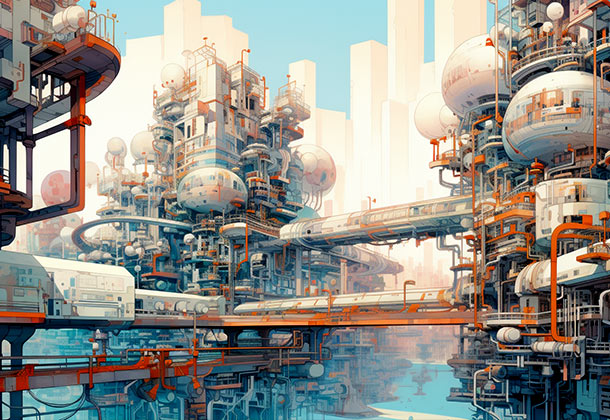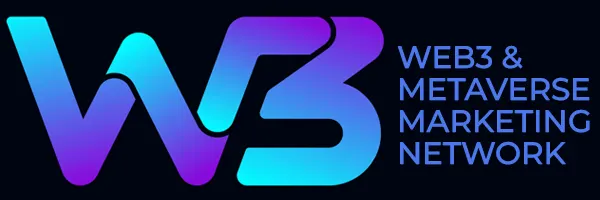The metaverse is a virtual world that is still under development. It is a decentralized experience with interoperable components and at the same time creator economy where users can create and sell goods or services. What are the potential impacts of the metaverse on our society?
- The metaverse is a virtual world that is still under development. This means that it is constantly evolving and changing. There is no one definition of the metaverse, and different people have different ideas about what it is and what it will become. However, there are some common characteristics that most people agree the metaverse will have. For example, the metaverse is expected to be a persistent world that exists even when users are not logged in. It is also expected to be a social world where users can interact with each other and create their own experiences.
- The metaverse is a decentralized experience with interoperable components. This means that it is not controlled by any one company or organization. Instead, it is built on a variety of different platforms and technologies. This allows users to move seamlessly between different metaverse experiences. For example, a user might be able to start their journey in a virtual world created by one company and then move to a different virtual world created by another company.
- The metaverse is a creator economy where users can create and sell goods. This means that the metaverse is not just a place to consume content, but also a place to create and sell content. Users can create their own virtual worlds, games, and other experiences. They can also create and sell virtual goods, such as clothing, accessories, and even real estate.
The metaverse is still in its early stages of development, but it has the potential to revolutionize the way we interact with the world around us. It has the potential to create new opportunities for businesses, creators, and consumers alike.

What does it take to run a metaverse?
The metaverse will require a significant investment in infrastructure and technology. Some of the key requirements include:
- High-speed, reliable internet connectivity: The metaverse will require users to have high-speed, reliable internet connectivity in order to experience it fully. This is because the metaverse will be a very data-intensive experience.
- Powerful computing power: The metaverse will also require powerful computing power in order to render realistic graphics and simulate physics. This computing power can be provided by cloud computing providers, on-premises data centers, or even edge computing devices.
- Immersive user interfaces: The metaverse will require immersive user interfaces that allow users to interact with the virtual world in a natural way. This could include virtual reality (VR) headsets, augmented reality (AR) glasses, or other wearable devices.
- Open standards and protocols: The metaverse will need to be built on open standards and protocols in order to ensure interoperability between different metaverse experiences. This will allow users to move seamlessly between different metaverse worlds and use the same virtual goods and services across different platforms.
In addition to these infrastructure and technology requirements, the metaverse will also require a strong community of users and creators. The metaverse will be most successful if it is a place where people can come together to socialize, create, and learn.
5 Metaverse Components to Know About
The metaverse is a complex system with many different components. Here are five of the most important components:
- Virtual worlds: Virtual worlds are the core of the metaverse. They are the spaces where users can interact with each other and with the virtual environment. Virtual worlds can be created using a variety of different game engines and platforms.
- Avatars: Avatars are digital representations of users in the metaverse. Users can customize their avatars to look and feel however they want. Avatars can be used to interact with other users, objects, and the virtual environment.
- Digital goods and services: Users can buy and sell digital goods and services in the metaverse. Digital goods can include things like clothing, accessories, and even real estate. Digital services can include things like education, entertainment, and healthcare.
- Payments: The metaverse will need a robust payments system in order to facilitate the buying and selling of digital goods and services. This payments system will need to be secure and efficient.
- Governance: The metaverse will need a system of governance in order to ensure that it is a safe and fair place for everyone. This governance system will need to address issues such as user safety, intellectual property rights, and content moderation.
10 real-world use cases of the metaverse, plus examples
Here are 10 real-world use cases of the metaverse, plus examples:
- Education: The metaverse can be used to create immersive educational experiences that allow students to learn in a more engaging and interactive way. For example, students can use VR headsets to take virtual field trips to historical sites or to explore the human body.
- Entertainment: The metaverse can be used to create new forms of entertainment, such as virtual concerts, games, and movies. For example, users can use VR headsets to attend a virtual concert or to play a multiplayer game with friends from all over the world.
- Work: The metaverse can be used to create new ways to work and collaborate. For example, employees can use VR headsets to attend virtual meetings or to work on projects together in a shared virtual space.
- Shopping: The metaverse can be used to create new shopping experiences that allow users to browse and purchase products in a more immersive way. For example, users can use VR headsets to try on clothes before they buy them or to visit a virtual store and see how furniture would look in their homes.
- Real estate: The metaverse can be used to create a digital real estate market. Users can buy and sell virtual real estate, which can be used to build homes, businesses, or other experiences.
- Healthcare: The metaverse can be used to create new healthcare experiences, such as virtual doctor’s appointments or virtual surgery. For example, patients can use VR headsets to consult with a doctor remotely or to have surgery performed by a robot.
- Socializing: The metaverse can be used to create new social experiences that allow users to connect with friends and family in a more immersive way. For example, users can use VR headsets to hang out with friends in a virtual coffee shop or to attend a virtual party.
- Gaming: The metaverse can be used to create new and innovative gaming experiences. For example, users can use VR headsets to play multiplayer games with friends from all over the world or to explore vast open worlds.
- Manufacturing: The metaverse can be used to create digital twins of factories and manufacturing processes. This can be used to improve efficiency and reduce waste.
- Research and development: The metaverse can be used to create virtual testbeds for new products and services. This can help businesses to reduce the cost and risk of development.











